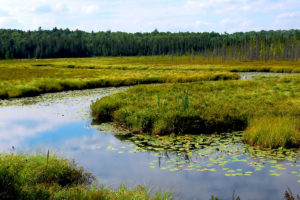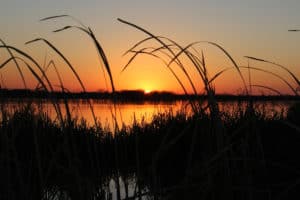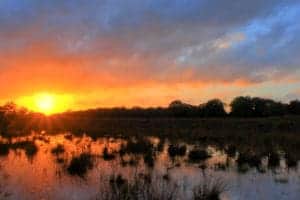Considering conservation buffers on your land? The USDA has 250,000 or more buffer contracts with about 160,000 farms and ranches. They may be a good choice for your land and for the environment. They are also economically viable for most operations. The Continuous Conservation Reserve Program (CCRP) is one of the programs that provide financial incentives for farmers and ranchers.
Conservation buffers are areas or strips of permanent vegetation established around and in cropland. They are placed between surface water areas and agricultural fields. The buffers range in width from 40 feet to 150 feet.
What do Buffers do?
- Minimize Soil Erosion
- Intercept & Buffer Pollutants
- Improve Water & Air Quality
- Enhance Wildlife Habitat
- Conserve, Beautify & Protect
Types of Buffers
- Grassland waterways
- Shelterbelts/Windbreaks
- Living Snow Fences
- Wetland Restoration
- Filter Strips & Trap Strips
- Shallow Water Areas
- Farmable Wetland Buffers
Why Use Buffers?
- Signing Payments up to $150 per acre
- Up to 50% Cost Sharing for Implementation
- Annual Rental Incentives from 10-40%
Programs for Assistance with Establishing Buffers
Many groups like Pheasants Forever and Quail Unlimited strongly support buffers and provide support and assistance. Even rural farm land loan lenders consider them a good choice. Combing land conservation with farming is possible with the many different programs available. The largest program is the CCRP but other programs are available to help landowners offset the cost of installing buffers on their land. Some of the programs to learn about include the Environmental Quality Incentives Program (EQIP), Wildlife Habitat Program (WHP), Wetlands Reserve Program (WRP) and the Forest Land Enhancement Program (FLEP).
Managing and Maintaining Conservation Buffers
Buffers should be managed in accordance with an overall plan for the entire piece of land for them to be most effective. By coordinating your efforts you can minimize the runoff and sediment that reaches the buffers to begin with. Buffers must be maintained to work and remain efficient and productive.
How to Maintain Buffers
- Mowing & Weed Control
- Controlled Grazing
- Hay Harvesting
- Removing Sediment Deposits
- Minimize Heavy Equipment Traffic on Buffer Land
The Effect of Buffers on the Area
Maintaining buffers can truly help the water quality on your land. They can help reduce field runoff and soil erosion and easily integrated into other existing on your property. Conservation buffers help reduce sediment and agricultural chemicals that build up in surface water tables. The vegetation helps soak up the runoff and in turn the nutrients help the vegetation. Buffers can reduce runoff from 50-100%. They also help with erosion control and they give what was probably wasteland some income which increase profitability on your investment.
Buffers are flexible in size, relatively easy to maintain, protect the land and many resources are available to help establish them on your property. For more information on buffers contact your local Natural Resource Conservation Service (NRCS) or Farm Service Agency (FSA) where you own your land and ask about the buffer conservation programs or visit the USDA website. Also contact your local state foresty office.
This content may not be used or reproduced in any manner whatsoever, in part or in whole, without written permission of LANDTHINK. Use of this content without permission is a violation of federal copyright law. The articles, posts, comments, opinions and information provided by LANDTHINK are for informational and research purposes only and DOES NOT substitute or coincide with the advice of an attorney, accountant, real estate broker or any other licensed real estate professional. LANDTHINK strongly advises visitors and readers to seek their own professional guidance and advice related to buying, investing in or selling real estate.









Marisa,
Good info for landowners. I’ve never heard of a “Living snow fence” before. I do have some experience with constructed wetlands, and the amount of sediment removal and the volume of water taken up through evapo-transpiration in the plants is pretty mind-boggling.
Thanks for the article.
Jonathan,
Thanks for the comments. A living fence is like a windbreak where trees or other types of plants are planted specifically to help with snowdrifts but here in Kansas many farmers plant them near their farmsteads to help reduce wind just as much as snow. For farmland near creeks and waterways in this area buffers are very important for the sediment removal you mentioned and also provide a place for wildlife habitat as well.